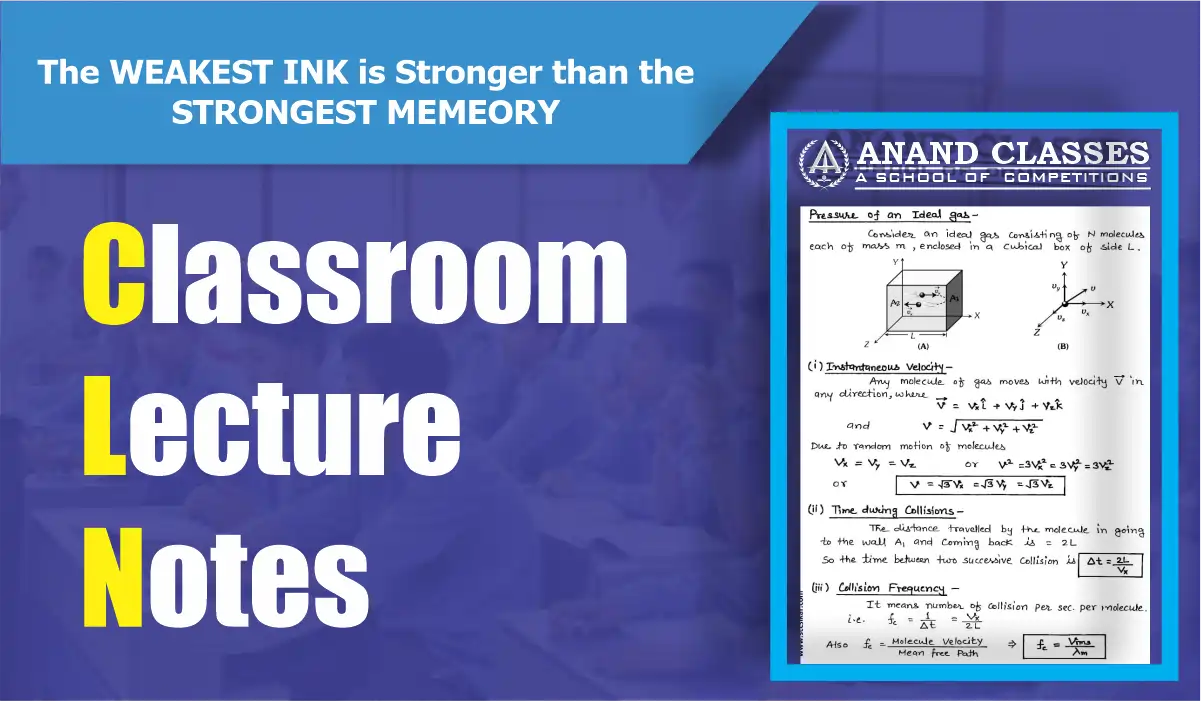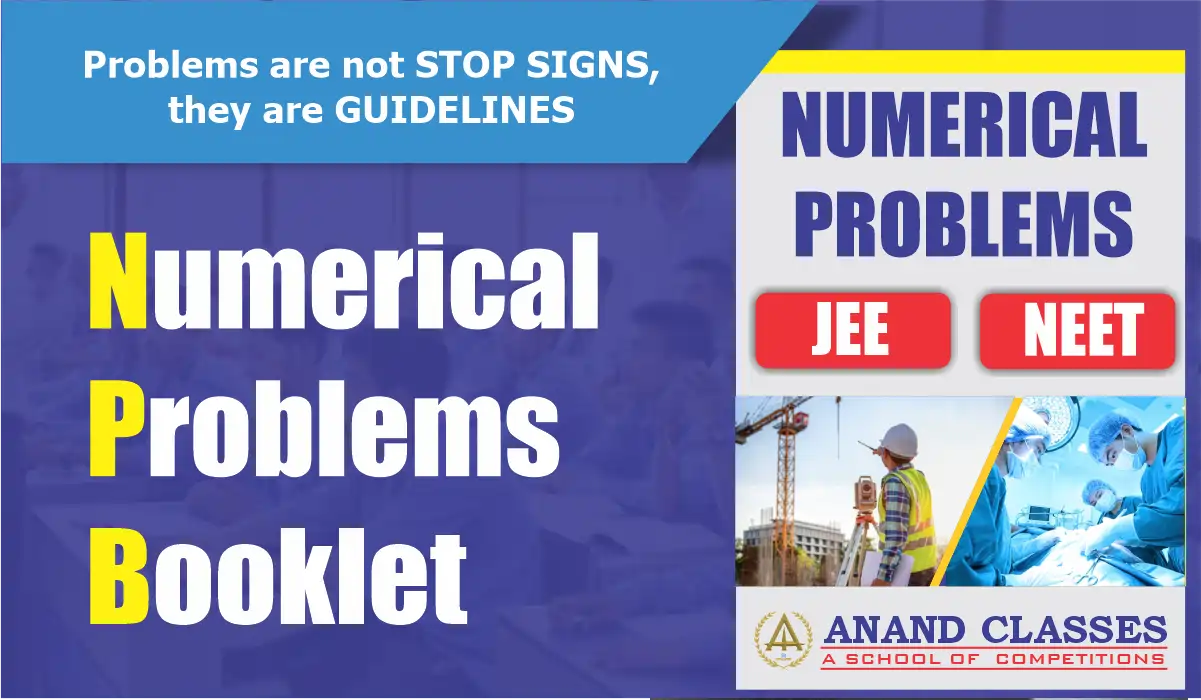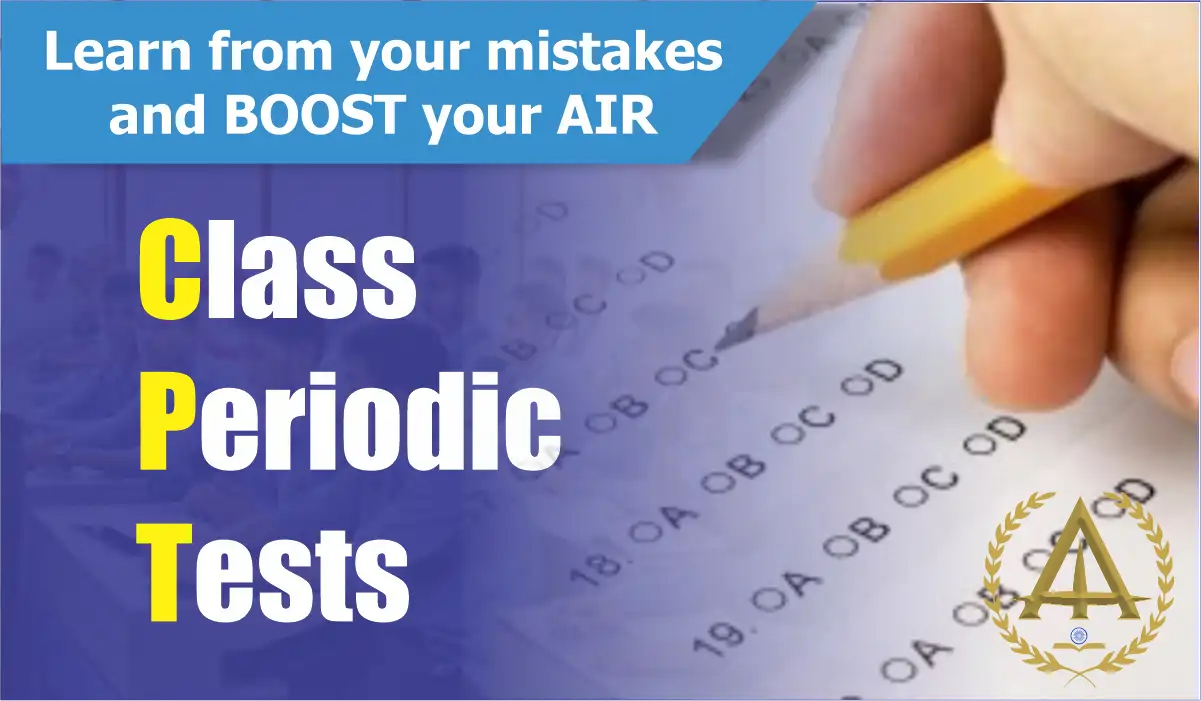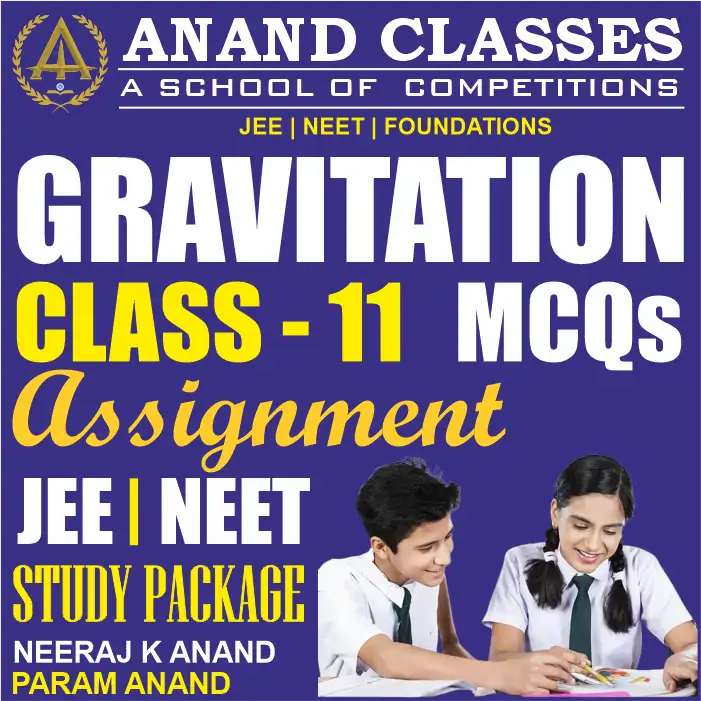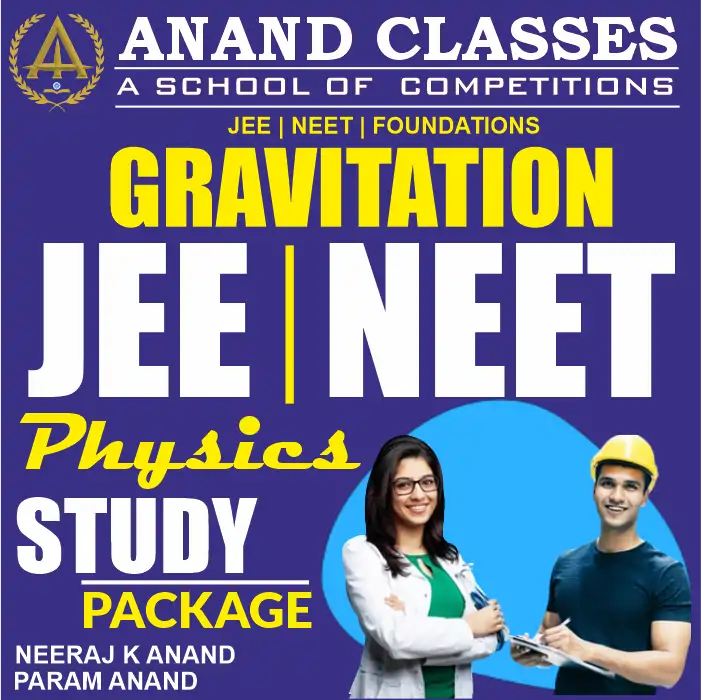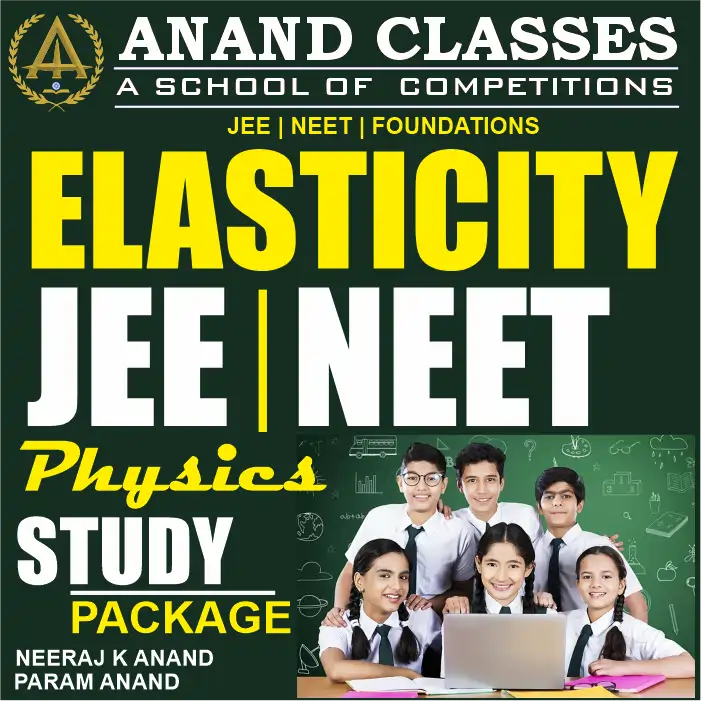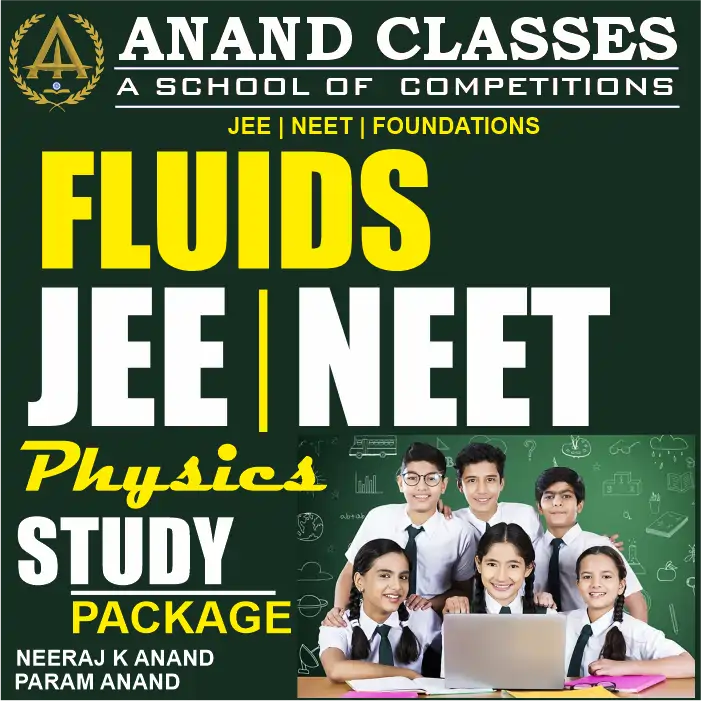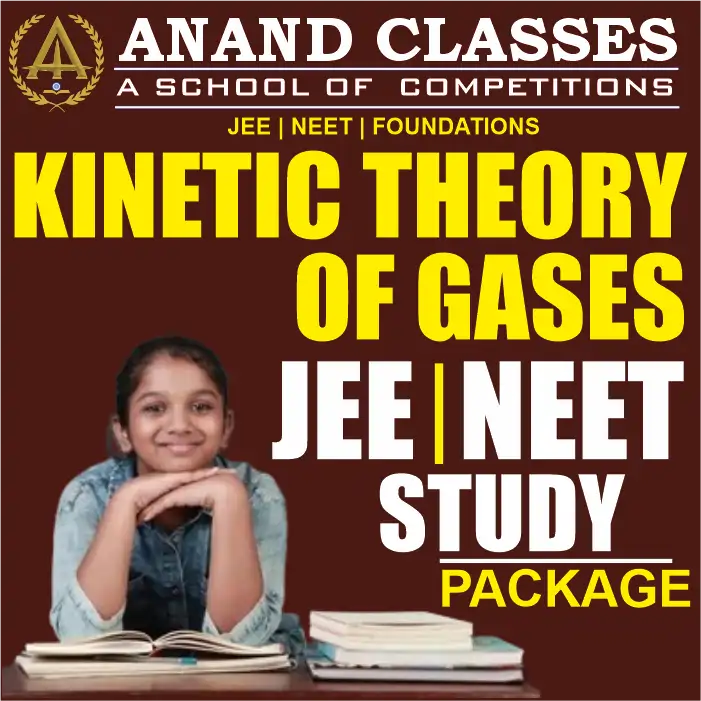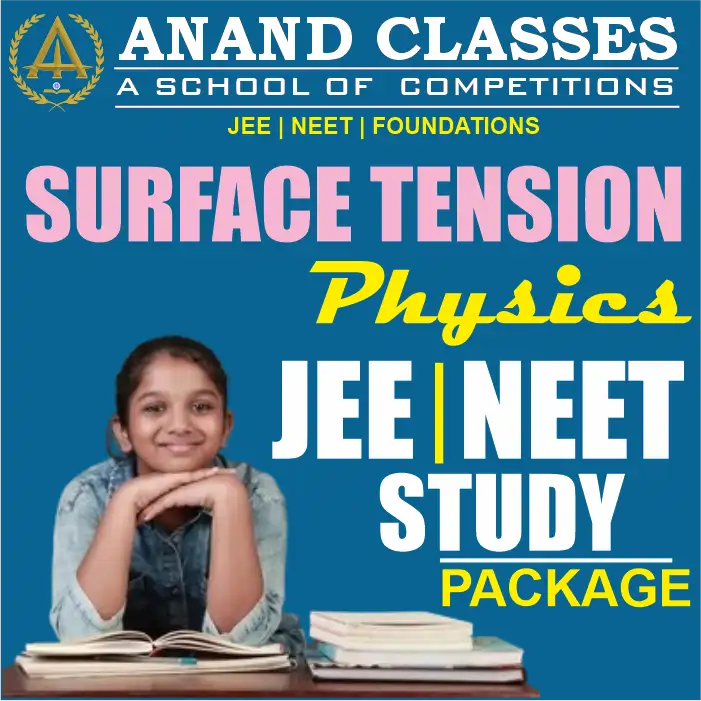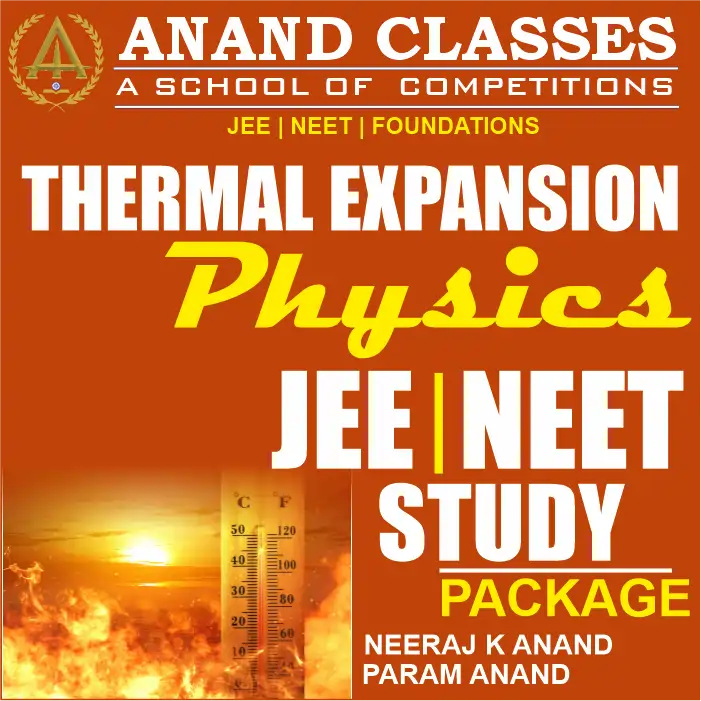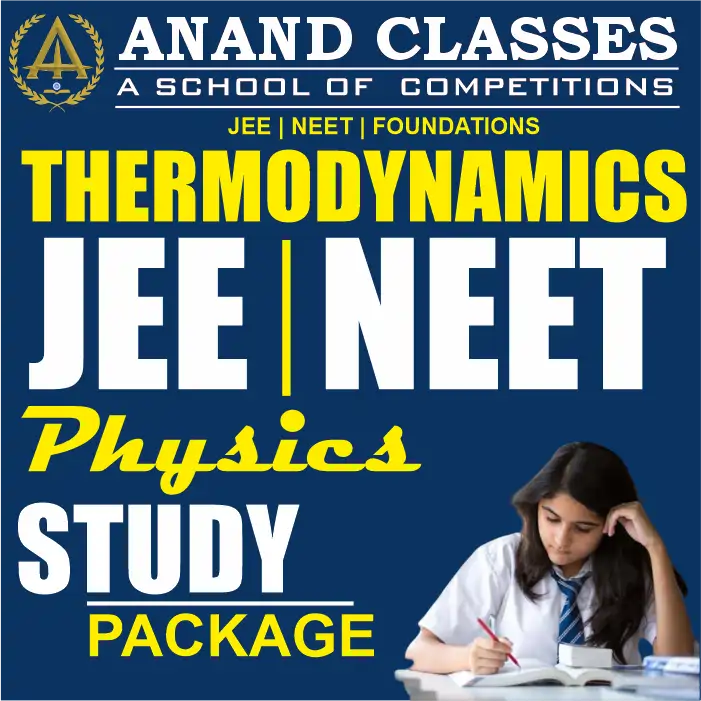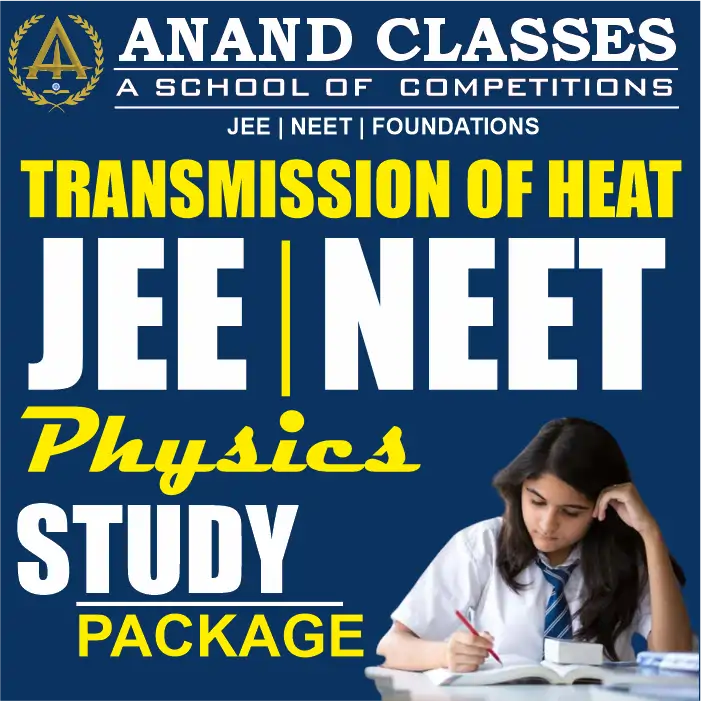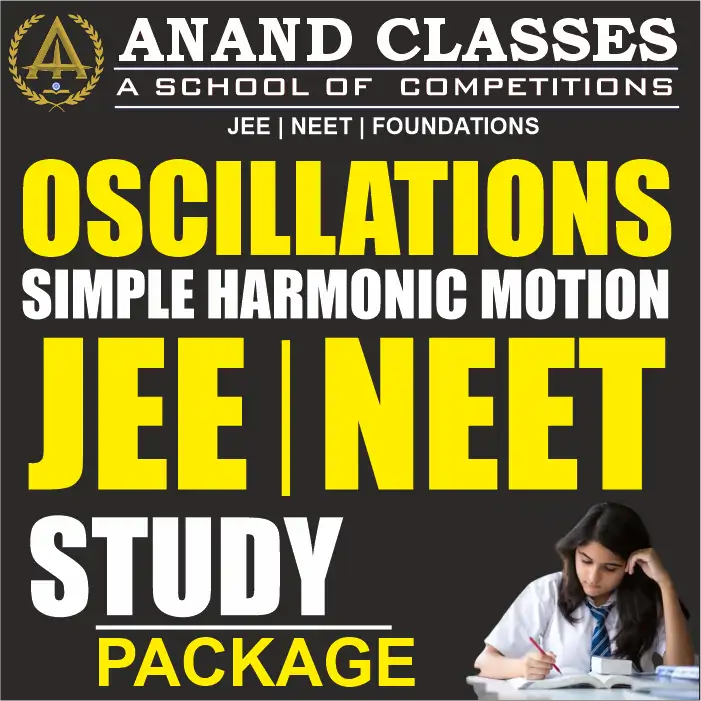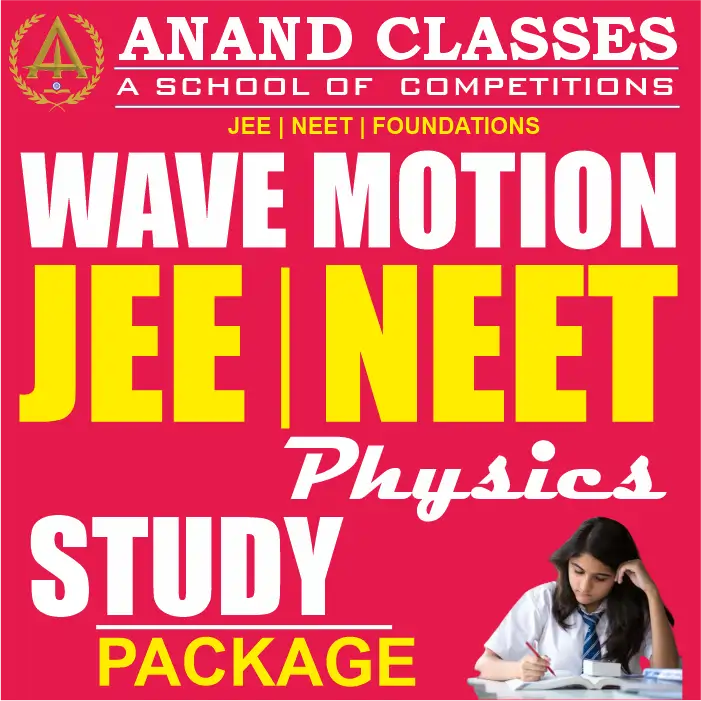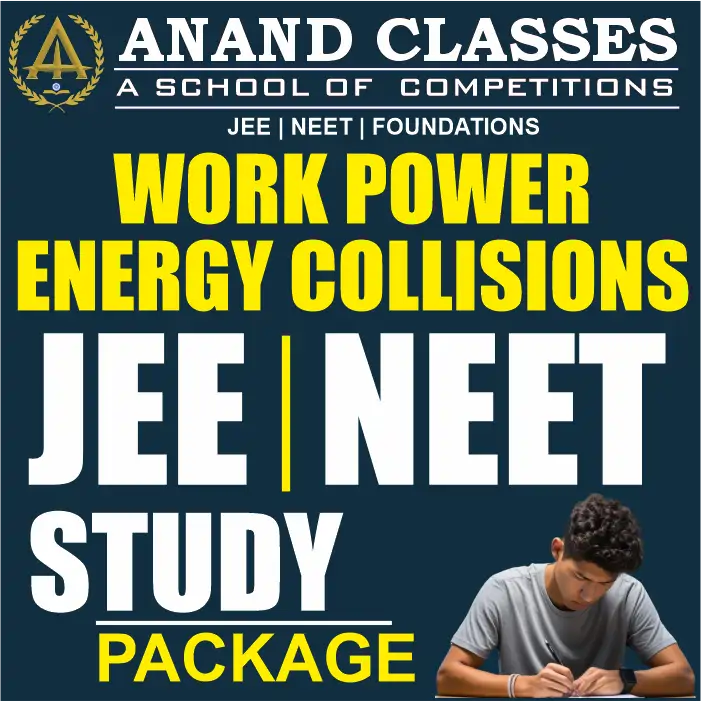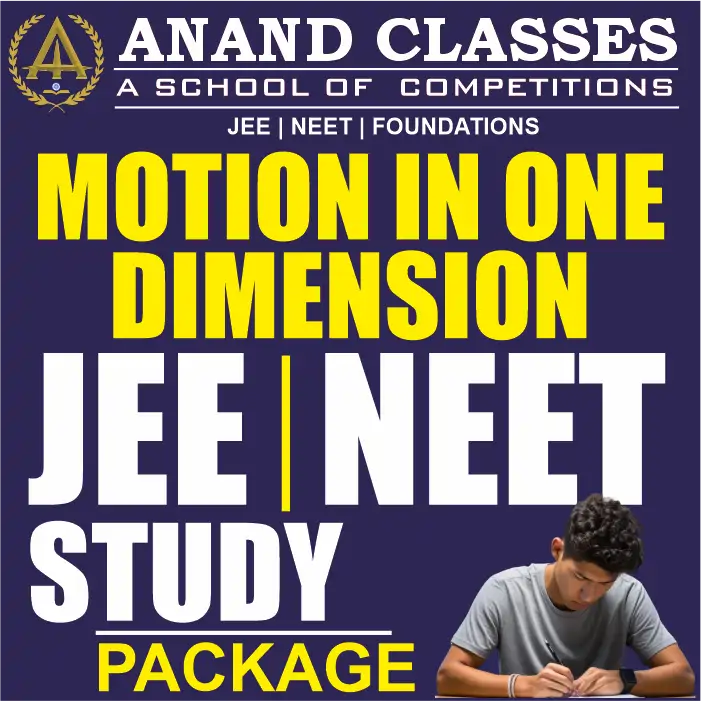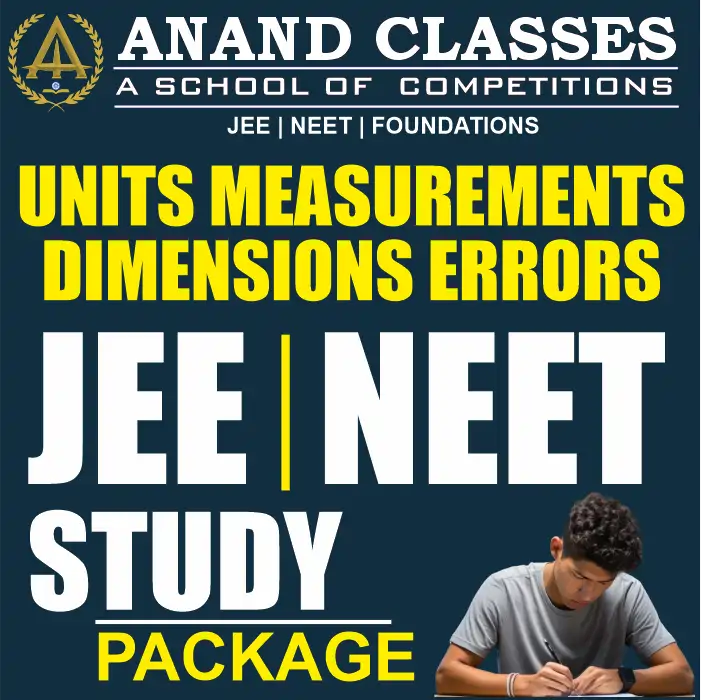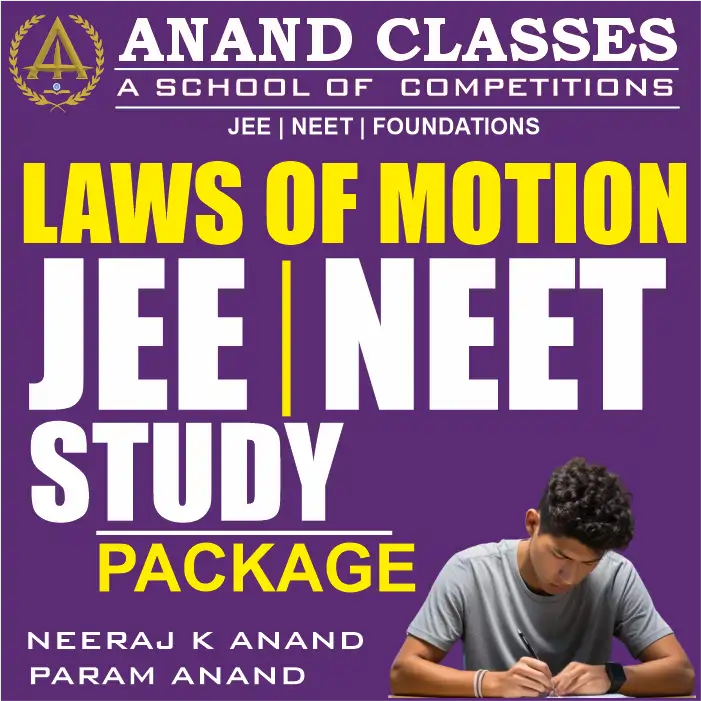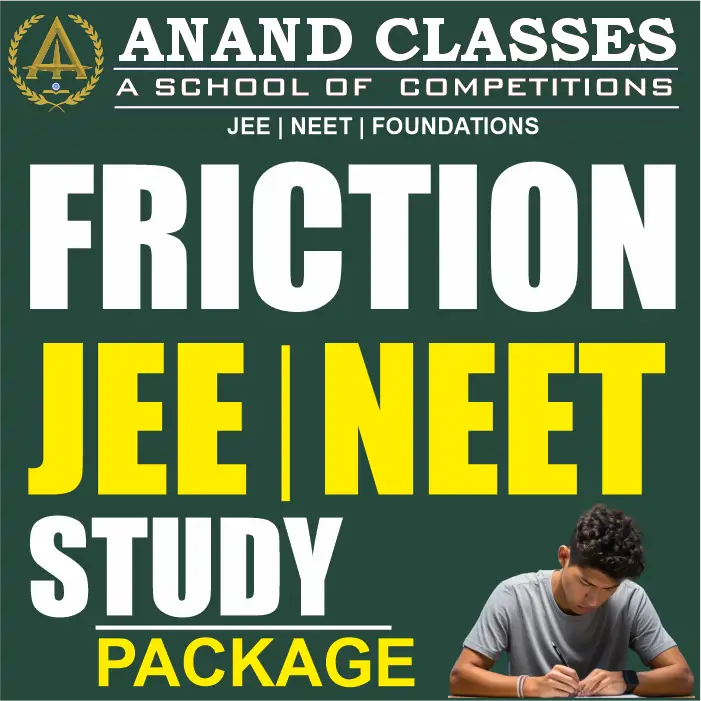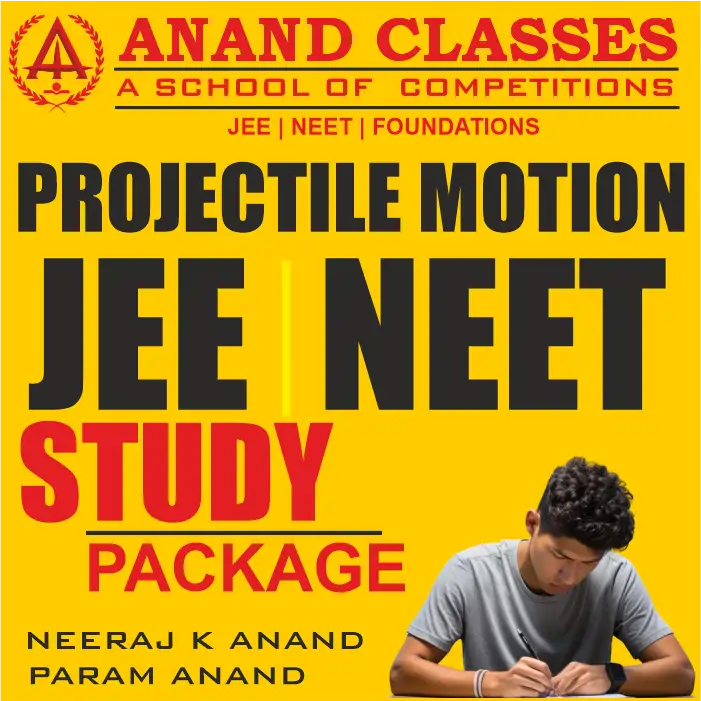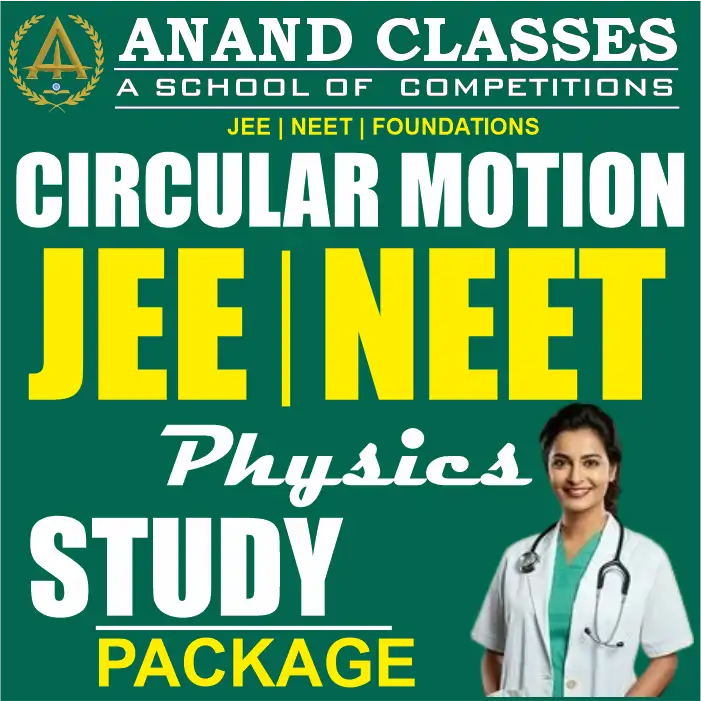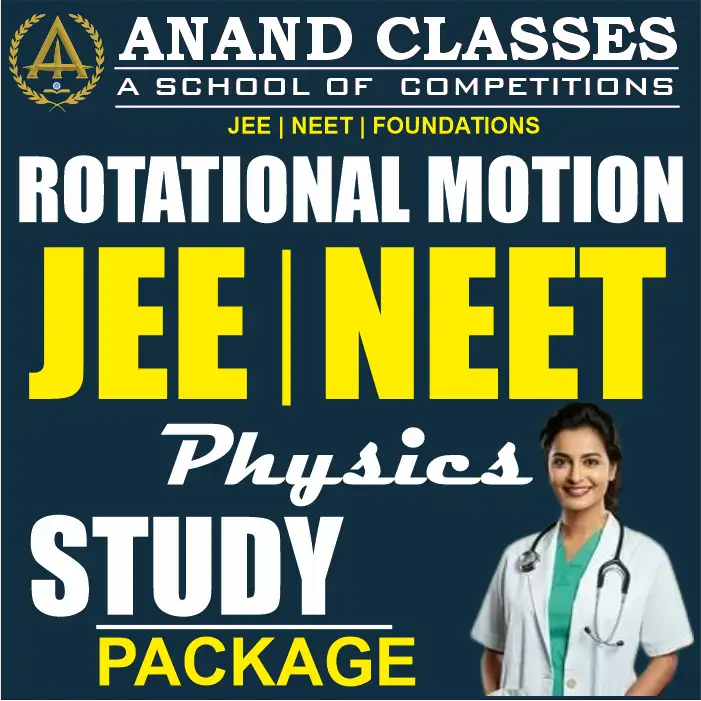Gravitation MCQs Questions for CBSE Physics Class 11 Board Exam-School Assignment
Class 11 Physics Chapter Gravitation MCQs are provided by ANAND CLASSES with answers for final school board exams and school assignment for teachers. These questions are designed as per the latest CBSE syllabus and NCERT curriculum. Solving these chapter-wise MCQs will help students to score good marks in the final school board exam. Gravitation Class 11 Physics MCQs are prepared for a better understanding of the concept. It allows students to test their knowledge and answering skills in the given time frame.
MCQs on Class 11 of Chapter Gravitation free pdf Download
Access MCQs on Class 11 Chapter Gravitation
Check the multiple-choice questions for the 11th Class Physics Gravitation chapter. Each MCQ will have four options here, out of which only one is correct. Students have to pick the correct option and check the answer provided here.
Question- Which law describes the orbits of planets around the sun?
- Newton’s law
- Faraday’s law
- Kepler’s law
- Kirchoff’s Law
Answer: (c) Kepler’s law
Explanation: Kepler’s law describes the orbits of planets around the sun.
Question- The sum of kinetic and potential energy is when a missile is launched with a velocity less than the escape velocity.
- 0
- Negative
- Positive
- None of these options
Answer: (b) Negative
Explanation: The sum of kinetic and potential energy when a missile is launched with a velocity less than the escape velocity is always negative.
Question- What would be the maximum height reached by the body if the body is projected vertically from the surface of the earth of radius R with a velocity equal to half of the escape velocity?
- 2+R
- R
- R/2
- R/3
Answer: (d) R/3
Question- In a manned satellite, people experience no gravity and it is known as
- Gravity-weight
- Gravitational weight
- Weightlessness
- Less-weight gravity
Answer: (c) Weightlessness
Question- Gravitational force on a particle inside a spherical shell is _________________.
- 1
- -1
- 0
- None of the option
Answer: (c) 0
Explanation: The gravitational force on a particle inside a spherical shell is zero.
Question- The satellite having the same time period of revolution as that of the earth is called _________________.
- Stationary satellite
- Geostationary satellite
- Gravitational satellite
- Geo satellite
Answer: (b) Geostationary satellite
Explanation: Geostationary satellites rotate in the equatorial plane from west to east. Geostationary satellites are used for communication purposes.
Question- In a gravitational field, at a point where the gravitational potential is zero
(a) the gravitational field is necessarily zero
(b) the gravitational field is not necesarily zero
(c) any value between one and infinite
(d) None of these
Answer-(a)
Question-The value of G varies with
(a) height above the earth’s surface
(b) depth below the ground
(c) radius of the planet
(d) None of these
Answer-(d)
Question-In some region, the gravitational field is zero. The gravitational potential in this region.
(a) must be variable
(b) must be constant
(c) cannot be zero
(d) must be zero
Answer-(b)
Question-Force of gravitational attraction is least
(a) at the equator
(b) at the poles
(c) at a point in between equator and any pole
(d) None of these
Answer-(a)
Question- Earth is flattened at poles, bulged at the equator. This is due to
(a) the angular velocity of spinning about its axis is less at equator
(b) the angular velocity of spinning about its axis is more at equator
(c) the centrifugal force is more at the equator than at the poles
(d) earth revolves round the sun in an elliptical orbit
Answer-(c)
Question- Who among the following gave first the experimental value of G
(a) Cavendish
(b) Copernicus
(c) Brok Taylor
(d) None of these
Answer-(a)
Question-Where will it be profitable to purchase one kilogram sugar?
(a) At poles
(b) At equator
(c) At 45° latitude
(d) At 40° latitude
Answer-(a)
Question-Mass of the Earth has been determined through
(a) use of Kepler’s T2/R3 constancy law and Moon’s period
(b) sampling the density of Earth’s crust and using Earth’s radius
(c) Cavendish’s determination of G and using Earth radius and g at its surface
(d) use of periods of satellites at different heights above Earth’s surface and known radius of Earth
Answer-(c)
Question-Newton’s universal law of gravitation applies to
(a) small bodies only
(b) planets only
(c) both small and big bodies
(d) only valid for solar system
Answer-(c)
Question-Consider Earth to be a homogeneous sphere. Scientist A goes deep down in a mine and scientist B goes high up in a balloon. The gravitational field measured by
(a) A goes on decreasing and that by B goes on increasing
(b) B goes on decreasing and that by A goes on increasing
(c) each decreases at the same rate
(d) each decreases at different rates
Answer-(d)
Question- At sea level, a body will have minimum weight at
(a) pole
(b) equator
(c) 42° south latitude
(d) 37° north latitude
Answer-(b)
Question-The ratio of the inertial mass to gravitational mass is equal to
(a) 0.5
(b) 1
(c) 2
(d) no fixed number
Answer-(c)
Question- There are _______ gravitational lines of force inside a spherically symmetric shell.
(a) infinitely many
(b) zero
(c) varying number depending upon surface area
(d) varying number depending upon volume
Answer-(b)
Question- Two spheres of masses m and M are situated in air and the gravitational force between them is F. The space around the masses is now filled with a liquid of specific gravity 3. The gravitational force will now be
(a) 3 F
(b) F
(c) F/3
(d) F/9
Answer-(b)
Question- Intensity of the gravitational field inside the solid sphere is
(a) variable (proportional to distance from centre)
(b) constant
(c) variable (does not depend on distance from the centre)
(d) zero
Answer-(a)
Question-Kepler’s second law regarding constancy of areal velocity of a planet is a consequence of the law of conservation of
(a) energy
(b) angular momentum
(c) linear momentum
(d) None of these
Answer-(b)
Question-The value of acceleration due to gravity on moving from equator to poles will
(a) decrease
(b) increase
(c) remain same
(d) become half
Answer-(b)
Question-If the earth is at one-fourth of its present distance from the sun, the duration of the year will be
(a) half the present year
(b) one-eighth the present year
(c) one-sixth the present year
(d) one-tenth the present year
Answer-(b)
Question- As we go down below the earth’s surface, the acceleration due to gravity decreases by a factor (d → distance, R → radius of earth)
(a) 1 +d/R
(b) 1- R/d
(c) 1- d/R
(d) remains constant
Answer-(c)
Question-Intensity of the gravitational field inside the hollow spherical shell is
(a) variable
(b) minimum
(c) maximum
(d) zero
Answer-(d)
Question-If measured by a spring balance, then 1 kg of salt will weigh more at
(a) equator
(b) poles
(c) centre of earth
(d) same at all places
Answer-(b)
Question-In planetary motion
(a) the angular speed remains constant
(b) the total angular momentum remains constant
(c) the linear speed remains constant
(d) neither the angular momentum nor angular speed remains constant
Answer-(b)
Question- In planetary motion, the angular momentum conservation leads to the law of
(a) orbits
(b) areas
(c) periods
(d) conservation of kinetic energy
Answer-(b)
Question- In motion of an object under the influence of gravitational force of another object, which of the following quantity is not conserved?
(a) Linear momentum
(b) Angular momentum
(c) Total mechanical energy
(d) None of these
Answer-(a)
Question-Weightlessness experienced while orbiting the earth in spaceship is the result of
(a) inertia
(b) acceleration
(c) zero gravity
(d) centre of gravity
Answer-(c)
Question-If the distance of earth is halved from the sun, then the no. of days in a year will be
(a) 365
(b) 182.5
(c) 730
(d) 129
Answer-(d)
Question- Time period of a simple pendulum inside a satellite orbitin earth is
(a) zero
(b)∞
(c) T
(d) 2 T
Answer-(b)
Question-There is no atmosphere on moon, because of
(a) smaller value of G
(b) smaller value of g
(c) smaller value of R
(d) smaller value of m
Answer-(b)
Question-The weight of a body at the centre of the earth is
(a) zero
(b) infinite
(c) same as on the surface of earth
(d) None of these
Answer-(a)
Question- Persons sitting in artificial satellite of the earth have
(a) zero mass
(b) zero weight
(c) certain definite weight
(d) infinite weight
Answer-(b)
Question-The escape velocity of a body depends upon mass as
(a) m0
(b) m1
(c) m2
(d) m3.
Answer-(a)
Question-The orbit traced by planet around a star is in general
(a) a circle
(b) an ellipse
(c) a parabola
(d) a straight line
Answer-(b)
Question-Which of the following is always positive?
(a) Potential energy of an object
(b) Total energy of a satellite
(c) Kinetic energy
(d) None of these
Answer-(c)
Question-The minimum velocity of projection to go out from the earth’s gravitational pull is called
(a) terminal velocity
(b) escape velocity
(c) angular velocity
(d) orbital velocity
Answer-(b)
Question-What is the distance of a geostationary satellite from the earth’s centre?
(a) 4.22 × 104 km
(b) 4.22 × 104 m
(c) 4.22 × 106 km
(d) 4.22 × 106 m
Answer-(a)
Question-There is no atmosphere on the moon because
(a) it is closer to the earth
(b) it revolves round the earth
(c) it gets light from the sun
(d) the escape velocity of gas molecules is lesser than their root mean square velocity
Answer-(d)
Question-When does the object in a satellite escapes to infinity?
(a) When the total energy is positive
(b) When total energy is zero
(c) Both (a) & (b)
(d) None of these
Answer-(c)
Question-The escape velocity of an object projected from the surface of a given planet is independent of
(a) radius of the planet
(b) the direction of projection
(c) the mass of the planet
(d) None of these
Answer-(b)
Question-The period of a satellite in a circular orbit near a planet is independent of
(a) the mass of the planet
(b) the radius of the planet
(c) the mass of the satellite
(d) All of the above
Answer-(c)
Question-The escape velocity of a projectile from the earth is approximately
(a) 7 km/sec
(b) 112 km/sec
(c) 11.2 km/sec
(d) 1.1 km/sec
Answer-(c)
Question-If a satellite is orbiting the earth very close to its surface, then the orbital velocity mainly depends on
(a) the mass of the satellite
(b) the radius of earth
(c) the orbital radius
(d) the mass of earth
Answer-(b)
Question-In which of the following cases, a person feels weightless?
(a) A person standing on the moon
(b) A person sitting in an artificial satellite of earth
(c) Both (a) & (b)
(d) None of these
Answer-(b)
Question-In case of a circular orbiting satellite which option is correct for its energies?
(a) Kinetic energy is negative
(b) Potential energy is positive
(c) Total energy is positive
(d) None of these
Answer-(d)
Question-A person sitting in a chair in a satellite feels weightless because
(a) the earth does not attract the objects in a satellite
(b) the normal force bythe chair on the person balances the earth’s attraction
(c) the normal force is zero
(d) the person in satellite is not accelerated.
Answer-(c)
Question- Two satellites of masses m1 and m2 (m1 > m2) are revolving round the earth in circular orbits of radii r1 and r2 (r1 > r2) respectively. Which of the following statements is true regarding their velocities v1 and v2?
(a) v1 = v2
(b) v1 < v2
(c) v1 > v2
(d) (v1 / r2) = (v2 / r2)
Answer-(b)
Question-Escape speed on the moon is _______ than escape speed on the earth.
(a) five times smaller
(b) five times greater
(c) six times greater
(d) six times smaller
Answer-(a)
Question. A man waves his arms while walking. This is to
(a) keep constant velocity
(b) ease the tension
(c) increase the velocity
(d) balance the effect of earth’s gravity
Answer: D
Question. Due to rotation of the earth the acceleration due to gravity g is
(a) maximum at the equator and minimum at the poles
(b) minimum at the equator and maximum at the poles
(c) same at both places
(d) None of these
Answer: B
Question. A planet moves around the sun. At a point P it is closest from the sun at a distance d1 and has a speed v1. At another point Q, when it is farthest from the sun at a distance d2 its speed will be
(a) d12v1/d22
(b) d2 v1 / d1
(c) d1 v1 / d2
(d) d22v1/d12
Answer: C
Question. The weight of an object in the coal mine, sea level and at the top of the mountain, are respectively W1, W2 and W3 then
(a) W1< W2 > W3
(b) W1= W2 = W3
(c) W1< W2 < W3
(d) W1> W2 > W3
Answer: A
Question. Two planets of radii r1 and r2 are made from the same material. The ratio of the acceleration due to gravity g1/g2 at the surfaces of the two planets is
(a) r1/r2
(b) r2/r1
(c) (r1/r2)2
(d) (r2/r1)2
Answer: A
Question. What would be the length of a sec. pendulum at a planet (where acc. due to gravity is g/4) if it’s length on earth is l
(a) l/2
(b) 2 l
(c) l/4
(d) 4 l
Answer: C
Question. The radii of circular orbits of two satellites A and B of the earth, are 4R and R, respectively. If the speed of satellite A is 3 V, then the speed of satellite B will be
(a) 3 V/4
(b) 6 V
(c) 12 V
(d) 3 V/2
Answer: B
Question. Energy required to move a body of mass m from an orbit of radius 2R to 3R is
(a) GMm/12R2
(b) GMm/3R2
(c) GMm/8R
(d) GMm/6R
Answer: D
Question. The escape velocity from the earth’s surface is 11 km/s. The escape velocity from a planet having twice the radius and same mean density as that of earth is
(a) 5.5 km/s
(b) 11 km/s
(c) 22 km/s
(d) None of these
Answer: C
Question. Time period of a simple pendulum inside a satellite orbiting earth is
(a) zero
(b) ∞
(c) T
(d) 2 T
Answer: B
Question. The kinetic energy needed to project a body of mass m from the earth surface (radius R) to infinity is
(a) mgR/2
(b) 2mgR
(c) mgR
(d) mgR/4.
Answer: C
Question. The escape velocity of a body depends upon mass as
(a) m0
(b) m1
(c) m2
(d) m3
Answer: A
Question. The gravitational force of attraction between a uniform sphere of mass M and a uniform rod of length l and mass m oriented as shown is
(a) GMm/r(r + l)
(b) GM/r2
(c) Mmr2 + l
(d) (r2 + l)mM
Answer: A
Question. Two satellites revolve round the earth with orbital radii 4R and 16R, if the time period of first satellite is T then that of the other is
(a) 4 T
(b) 42/3 T
(c) 8 T
(d) None of these
Answer: C
Question. Which of the following quantities do not depend upon the orbital radius of the satellite ?
(a) T/R
(b) T2/R
(b) T2/R2
(d) T2/R3
Answer: D
Question. A satellite of mass ‘m’, moving around the earth in a circular orbit of radius R, has angular momentum L. The areal velocity of satellite is (Me = mass of earth)
(a) L /2m
(b) L /m
(c) 2L /m
(d) 2L /Me
Answer: A
Question. A planet revolves in an elliptical orbit around the sun. The semi-major and semi-minor axes are a and b. Then the square of time period, T is directly proportional to
(a) a3
(b) b3
(c) (a+b/2)3
(d) (a-b/2)3
Answer: A
Question. The radius of a planet is 1/4th of Re and its acc. due to gravity is 2g. What would be the value of escape velocity on the planet, if escape velocity on earth is ve.
(a) ve/√2
(b) ve√2
(c) 2 ve
(d) ve/2
Answer: A
Question. If the gravitational force had varied as r–5/2 instead of r–2; the potential energy of a particle at a distance ‘r’ from the centre of the earth would be proportional to
(a) r-1
(b) r-2
(c) r-3 / 2
(d) r-5 / 2
Answer: C
Question. A solid sphere of uniform density and radius R applies a gravitational force of attraction equal to F1 on a particle placed at A, distance 2R from the centre of the sphere.
A spherical cavity of radius R/2 is now made in the sphere as shown in the figure. The sphere with cavity now applies a gravitational force F2 on the same particle placed at A. The ratio F2/F1 will be
(a) 1/2
(b) 3
(c) 7
(d) 1/9
Answer: D
Question. The earth is assumed to be sphere of radius R. A platform is arranged at a height R from the surface of Earth. The escape velocity of a body from this platform is kv, where v is its escape velocity from the surface of the earth. The value of k is
(a) 1/√2
(b) 1/3
(c) 1/2
(d) √2
Answer: A
Question. The escape velocity for a body projected vertically upwards from the surface of earth is 11 km/s. If the body is projected at an angle of 45º with the vertical, the escape velocity will be
(a) 22 km/s
(b) 11 km/s
(c) 11/√2 km/s
(d) 11 √2 km/s
Answer: B
Question. Explorer 38, a radio-astronomy satellite of mass 200 kg, circles the Earth in an orbit of average radius 3R/2 where R is the radius of the Earth. Assuming the gravitational pull on a mass of 1 kg at the earth’s surface to be 10 N, calculate the pull on the satellite
(a) 889 N
(b) 89 N
(c) 8889 N
(d) 8.9 N
Answer: A
Question. The orbital velocity of an artificial satellite in a circular orbit very close to Earth is v. The velocity of a geosynchronous satellite orbiting in a circular orbit at an altitude of 6R from Earth’s surface will be
(a) v/√7
(b) v/√6
(c) v
(d) √6v
Answer: A
Question. Escape velocity when a body of mass m is thrown vertically from the surface of the earth is v, what will be the escape velocity of another body of mass 4 m is thrown vertically
(a) v
(b) 2v
(c) 4v
(d) None of these
Answer: A
Question. The potential energy of a satellite of mass m and revolving at a height Re above the surface of earth where Re = radius of earth, is
(a) – m g Re
(b) -mg Re/2
(c) -mg Re/3
(d) -mg Re/4
Answer: B
Question. The acceleration due to gravity at a height 1 km above the earth is the same as at a depth d below the surface of earth. Then
(a) d = 1 km
(b) d = 3/2km
(c) d = 2 km
(d) d = 1/2km
Answer: C
Question. If the mass of earth is eighty times the mass of a planet and diameter of the planet is one fourth that of earth, then acceleration due to gravity on the planet would be
(a) 7.8 m/s2
(b) 9.8 m/s2
(c) 6.8 m/s2
(d) 2.0 m/s2
Answer: D
Question. A satellite is orbiting around the earth near its surface. If its kinetic energy is doubled, then
(a) it will remain in the same orbit.
(b) it will fall on the earth.
(c) it will revolve with greater speed.
(d) it will escape out of the gravitational field of the earth.
Answer: D
Question. The ratio of the radii of the planets R1 and R2 is k. The ratio of the acceleration due to gravity is r. The ratio of the escape velocities from them will be
(a) k r
(b) √kr
(c) √(k / r)
(d) √(r / k)
Answer: B
Question. The distance of neptune and saturn from the sun is nearly 1013 and 1012 meter respectively. Assuming that they move in circular orbits, their periodic times will be in the ratio
(a) 10
(b) 100
(c) 10 √10
(d) 1000
Answer: C
Question. A geostationary satellite is orbiting the earth at a height of 5R above that surface of the earth, R being the radius of the earth. The time period of another satellite in hours at a height of 2R from the surface of the earth is
(a) 5
(b) 10
(c) 6√2
(d) 6/√2
Answer: C
Question. If the length of a simple pendulum is increased by 2%, then the time period
(a) increases by 2%
(b) decreases by 2%
(c) increases by 1%
(d) decreases by 1%
Answer: C
Question. The density of a newly discovered planet is twice that of earth. The acceleration due to gravity at the surface of the planet is equal to that at the surface of the earth. If the radius of the earth is R, the radius of the planet would be
(a) ½ R
(b) 2 R
(c) 4 R
(d) 1/4 R
Answer: A
Question. The kinetic energy of a satellite in its orbit around the earth is E. What should be the kinetic energy of the satellite so as to enable it to escape from the gravitational pull of the earth?
(a) 4 E
(b) 2 E
(c) √2 E
(d) E
Answer: B
Question. The time period of a satellite in a circular orbit of radius R is T, the period of another satellite in a circular orbit of radius 4 R is
(a) 4 T
(b) T/4
(c) 8 T
(d) T/8
Answer: C
Question. If the change in the value of g at the height h above the surface of the earth is the same as at a depth ‘x’ below it, then (both x and h being much smaller than the radius of the earth)
(a) x = h
(b) x = 2 h
(c) x = h/2
(d) x = h2
Answer: B
Question. A satellite of mass m revolves around the earth of radius R at a height ‘x’ from its surface. If g is the acceleration due to gravity on the surface of the earth, the orbital speed of the satellite is
(a) gR2/R + x
(b) gR/R – x
(c) gx
(d) (gR2/R + x)1/2
Answer: D
Question. The time period of an earth satellite in circular orbit is independent of
(a) both the mass and radius of the orbit
(b) radius of its orbit
(c) the mass of the satellite
(d) neither the mass of the satellite nor the radius of its orbit.
Answer: C
Question. Suppose the gravitational force varies inversely as the nth power of distance. Then the time period of a planet in circular orbit of radius ‘R’ around the sun will be proportional to
(a) Rn
(b) R (n-1/2)
(c) R(n+1/2)
(d) R (n-2/2)
Answer: C
Question. There is no atmosphere on the moon because
(a) it is closer to the earth and also it has the inactive inert gases in it.
(b) it is too for from the sun and has very low pressure in its outer surface.
(c) escape velocity of gas molecules is greater than their root mean square velocity.
(d) escape velocity of gas molecules is less than their root mean square velocity.
Answer: D
Question. The maximum kinetic energy of a planet moving around the sun is at a position
(a) A
(b) B
(c) C
(d) D
Answer: A
Question. Consider Earth to be a homogeneous sphere. Scientist A goes deep down in a mine and scientist B goes high up in a balloon. The gravitational field measured by
(a) A goes on decreasing and that by B goes on increasing
(b) B goes on decreasing and that by A goes on increasing
(c) each decreases at the same rate
(d) each decreases at different rates
Answer: D
Question. Two point masses each equal to 1 kg attract one another with a force of 10–10 N. The distance between the two point masses is (G = 6.6 × 10–11 MKS units)
(a) 8 cm
(b) 0.8 cm
(c) 80 cm
(d) 0.08 cm
Answer: C
Question. Two astronauts are floating in gravitation free space after having lost contact with their spaceship. The two will
(a) move towards each other.
(b) move away from each other.
(c) become stationary
(d) keep floating at the same distance between them.
Answer: A
Question. If there were a small gravitational effect, then which of the following forces will undergo a change?
(a) Viscous force
(b) Electrostatic force
(c) Magnetic force
(d) Archimedes’ uplift
Answer: D
Question. The ratio of the kinetic energy required to be given to a satellite so that it escapes the gravitational field of Earth to the kinetic energy required to put the satellite in a circular orbit just above the free surface of Earth is
(a) 1
(b) 2
(c) 3
(d) 9
Answer: B
Question. The radii of two planets are respectively R1 and R2 and their densities are respectively r1 and r2. The ratio of the accelerations due to gravity at their surfaces is
(a) g1:g2 = ρ1/R12 : ρ2/R22
(b) g1 : g2 = R1R2 : ρ1ρ2
(c) g1 : g2 = R1r2 : R2ρ1
(d) g1 : g2 = R1ρ1 : R2ρ2
Answer: D
Question. An artificial satellite moving in a circular orbit around the earth has a total (K.E. + P.E.) is E0. Its potential energy is –
(a) –E0
(b) 1.5 E0
(c) 2E0
(d) E0
Answer: C
Question: In planetary motion
a) the total angular momentum remains constant
b) the linear speed remains constant
c) neither the angular momentum nor angular speed remains constant
d) the angular speed remains constant
Answer: the total angular momentum remains constant
Question: Kepler’s second law may be stated as “under the influence of central force, in equal interval of time, position vector sweeps out equal
a) area
b) None of these
c) distance
d) dispalacement
Answer: area
Question: If the distance of earth is halved from the sun, then the no. of days in a year will be
a) 129
b) 730
c) 182.5
d) 365
Answer: 129
Question: If the earth is at one-fourth of its present distance from the sun, the duration of the year will be
a) one-eighth the present year
b) one-sixth the present year
c) one-tenth the present year
d) half the present year
Answer: one-eighth the present year
Question: Newton’s universal law of gravitation applies to
a) both small and big bodies
b) only valid for solar system
c) planets only
d) small bodies only
Answer: both small and big bodies
Question: The value of G varies with
a) None of these
b) radius of the planet
c) depth below the ground
d) height above the earth’s surface
Answer: None of these
Question: Force of gravitational attraction is least
a) at the equator
b) at the poles
c) at a point in between equator and any pole
d) None of these
Answer: at the equator
Question: Assertion : If earth suddenly stops rotating about its axis, then the value of acceleration due to gravity will become same at all the places.
Reason : The value of acceleration due to gravity depends upon the rotation of the earth.
a) Assertion is correct, reason is incorrect
b) Assertion is incorrect, reason is correct
c) Assertion is correct, reason is correct; reason is not a correct explanation for assertion
d) Assertion is correct, reason is correct; reason is a correct explanation for assertion
Answer: Assertion is correct, reason is incorrect
Question: The height of the point vertically above the earth’s surface, at which acceleration due to gravity becomes 1% of its value at the earth’s surface is (Radius of the earth = R)
a) 9 R
b) 10 R
c) 20 R
d) 8 R
Answer: 9 R
Question: The speed of earth’s rotation about its axis is w. Its speed is increases to x times to make the effective acceleration due to gravity equal to zero at the equator. Then x is
a) 17
b) 34
c) 8.5
d) 1
Answer: 17
Question: Where will it be profitable to purchase one kilogram sugar?
a) At equator
b) At 40° latitude
c) At poles
d) At 45° latitude
Answer: At equator
Question: Earth is flattened at poles, bulged at the equator. This is due to
a) the centrifugal force is more at the equator than at the poles
b) the angular velocity of spinning about its axis is more at equator
c) the angular velocity of spinning about its axis is less at equator
d) earth revolves round the sun in an elliptical orbit
Answer: the centrifugal force is more at the equator than at the poles
Question: A particle is suspended from a spring and it stretches the spring by 1 cm on the surface of earth. By how much amount the same particle will stretch the same spring at a place 800 km above the surface of earth.
a) 0.79 cm
b) 1.38 cm
c) 2.38 cm
d) 1.59 cm
Answer: 0.79 cm
Question: Average density of the earth
a) is directly proportional to g
b) is inversely proportional to g
c) does not depend on g
d) is a complex function of g
Answer: is directly proportional to g
Question: If the earth were to rotates faster than its present speed, the weight of an object will
a) decrease at the equator but remain unchanged at the poles
b) remain unchanged at the equator but decrease at the poles
c) remain unchanged at the equator but increase at the poles
d) increase at the equator but remain unchanged at the poles
Answer: decrease at the equator but remain unchanged at the poles
Question: At what height from the ground will the value of g be the same as that in 10 km deep mine below the surface of earth?
a) 5 km
b) 15 km
c) 10 km
d) 20 km
Answer: 5 km
Question: The ratio of radii of earth to another planet is 2/3 and the ratio of their mean densities is 4/5. If an astronaut can jump to a maximum height of 1.5 m on the earth, with the same effort, the maximum height he can jump on the planet is
a) 0.8 m
b) 0.5 m
c) 1.25 m
d) 1 m
Answer: 0.8 m
Question: Consider Earth to be a homogeneous sphere. Scientist A goes deep down in a mine and scientist B goes high up in a balloon. The gravitational field measured by
a) each decreases at different rates
b) each decreases at the same rate
c) B goes on decreasing and that by A goes on increasing
d) A goes on decreasing and that by B goes on increasing
Answer: each decreases at different rates
Question: In some region, the gravitational field is zero. The gravitational potential in this region.
a) must be constant
b) must be zero
c) must be variable
d) cannot be zero
Answer: must be constant
Question: In a gravitational field, at a point where the gravitational potential is zero
a) the gravitational field is necessarily zero
b) the gravitational field is not necesarily zero
c) any value between one and infinite
d) None of these
Answer: the gravitational field is necessarily zero
Question. Gravitational force is a conservative force.
- True
- False
Answer: (a) True
Self Test : Gravitation MCQs
1. What causes tidal waves in the sea?
Gravitation effect on the earth by the moon.
Gravitational effect on the earth by the sun.
The atmospheric impact of earth.
None of these.
2. What holds the atmosphere to earth?
Gravity.
Clouds.
Winds.
None of the above.
3. If the gravitational effect were to be lesser than this present effect, which other force would likely have altered?
Electrostatic force.
Archimedes principle.
Viscous effect.
None of these.
4. What is the weight of a body at the earth’s centre?
Zero.
Same as on the surface of the earth.
Less than the weight on the earth’s surface.
None of the above.
5. The earth and the moon are subjected to the sun’s gravitational force. What does the orbit of the moon look like from the sun?
Elliptical.
Somewhat elliptical.
Parabola.
Hyperbola.
6. The distance between two masses is doubled, what happens to the gravitational force between them?
Double.
Half.
Remains the same.
Decreased to a quarter.
7. Which of the following proves there is a gravitational force between the earth and the sun?
Occurrence of day and night.
Earth revolving around the sun.
The sun is apparently revolving around the earth.
Falling bodies deviating towards the east.
8. What is the kinetic energy of a satellite taking time T for revolution?
1/T
T−2/3
1/T2
1/T3
9. Gravitational mass of a body is proportional to the gravitational of what?
Field.
Intensity.
Force.
All the above.
10. Orbital velocity of a satellite is dependent on which factor when it is orbiting near the earth’s surface?
Mass of the satellite.
Mass of earth.
Radius of earth.
Orbital radius.
11. What is the ratio of linear velocities v1 and v2 of two planets which are at a distance closest and farthest from the sun? Distance from closest planet and farthest planet are d1 and d2 respectively.
(d2/d1)2
(d2/d1)
(d1/d2)
(d1/d2)2
12. What is energy required to move a body of mass m from an orbit with radius 2R to 3R?
GmM/12R2
GmM/8R
GmM/6R
GmM/2R2
13. Kepler’s second law of constancy shows the conservation of which of these following?
Angular momentum.
Linear momentum.
Energy.
None of the above.
14. What is the rotational period of a geostationary satellite?
6 hours.
12 hours.
48 hours.
24 hours.
Answers:
1(a), 2(a), 3(b), 4(a), 5(b), 6(d), 7(b), 8(b), 9(d), 10(c), 11(b), 12(c), 13(a), 14(d)
CBSE Class 11 Physics Chapter Gravitation, introduces students to the concept of gravity. The chapter deals with major topics like Newton’s law of gravitation, acceleration due to gravity, Kepler’s laws of planetary motion, escape velocity and tidal forces. Students can revise all these concepts and gauge your level of understanding of the chapter by solving the MCQs provided here. ANAND CLASSES provided here the MCQs which have been prepared with assistance from the experienced subject teachers. These questions are based on the latest CBSE Class 11 Syllabus. Try solving all the MCQs to assess your knowledge of concepts and prepare important questions for the annual exam. You can also download all questions and answers in PDF from the direct link provided in this article.







